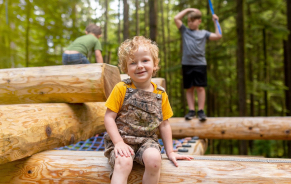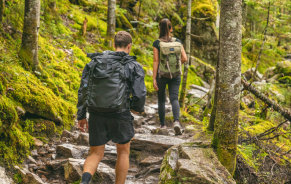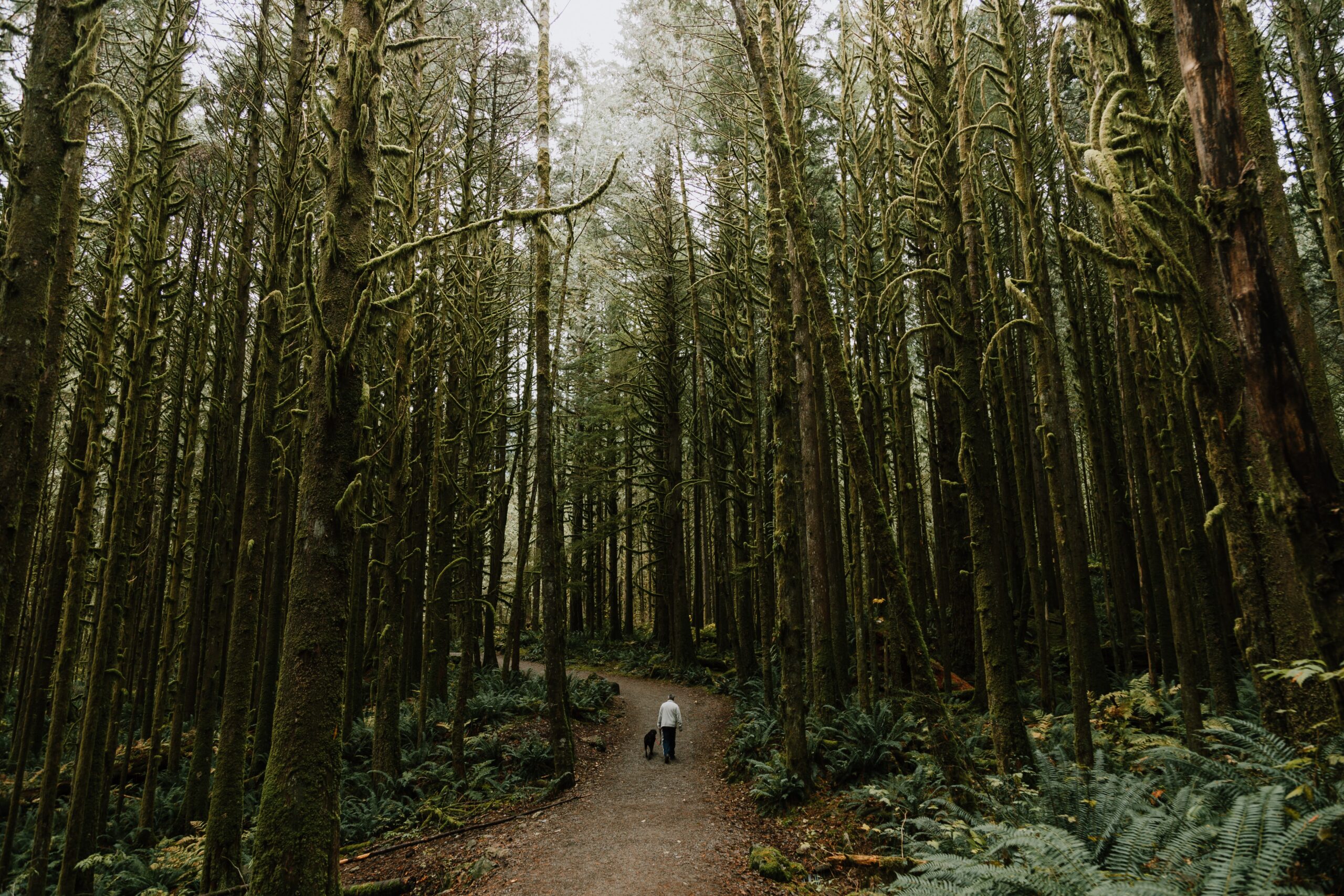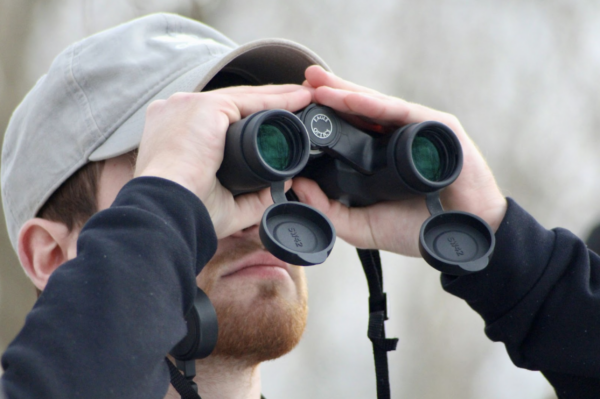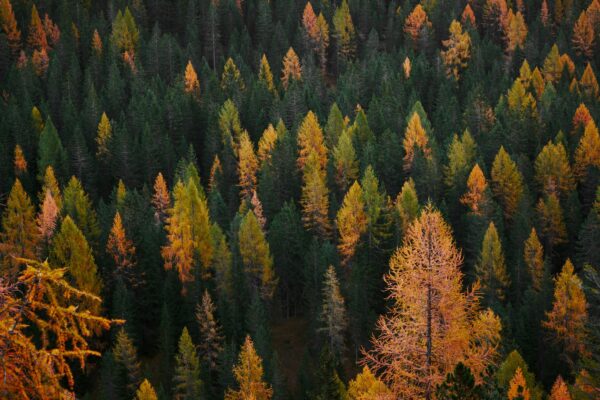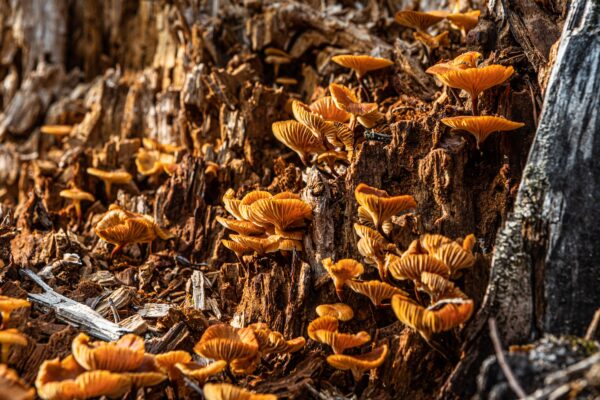The Lower Mainland is a haven for those looking to get out and enjoy the outdoors for a couple of hours or go further for days on end. From majestic mountains to serene coastlines, the region boasts a rich diversity. One of the most intriguing and biodiverse environments locally is our forest ecosystem. In this blog post, we will explore Vancouver’s local forests, with a special focus on the Malcolm Knapp Research Forest. We’ll unravel the intricate web of life that makes these forests so captivating and discover how UBC’s Wild & Immersive programming offers you an unparalleled opportunity to connect with nature.
Popular Forests of the Lower Mainland
The Lower Mainland forests are a veritable playground for nature enthusiasts, full of trails to explore, views to see, and flora and fauna to observe.
Keep reading for a quick rundown of the most popular forests of the Lower Mainland:
The North Shore Mountains – Cypress Provincial Park, Grouse Mountain, and Seymour Provincial Park
Perched above Vancouver are the North Shore mountains – Cypress, Grouse, and Seymour. Blanketing the slopes of these majestic peaks, the temperate rainforests boast a rich diversity of flora and fauna. Towering Douglas firs, western red cedars, and hemlocks create a verdant canopy, providing a haven for an array of wildlife. The vibrant interplay of light filtering through the dense foliage and the gentle rustling of leaves create an immersive experience for visitors exploring the network of trails that crisscross the mountains.
Trails to check out:
- Dog Mountain – this short, easy hike on Mount Seymour is great in summer with hiking boots or winter on snowshoes or trail spikes. It’s 5km round trip, taking about 2 hours with minimal elevation gained but some technical spots to watch your footing on. On clear days you’ll get a beautiful view of Vancouver and on the days you’re socked in, you’ll still get to enjoy some classic PNW misty, foggy views in the forest as you pass through.
Seymour Parking Lot, North Vancouver, BC
- Eagle Bluffs – This hike is a little more intermediate but well worth the effort. Starting in the parking lot of Cypress Mountain’s downhill ski area, you’ll head up beside the ski runs, following along the Baden Powell trail where you’ll go over creeks, boardwalks, through alpine meadows, and more. When you get to Eagle Bluffs there are some spectacular views of the Lower Mainland.
Cypress Downhill Area, North Vancouver, BC
Capilano River Regional Park
Just below the North Shore mountains is Capilano River Regional Park, full of tall trees and the melody of rushing waters. The park is renowned for bridges, including the Capilano suspension bridge, and walkways across and along the river, providing breathtaking views of the surrounding forest. Trails wind through the ancient rainforest, allowing visitors to witness the majesty of centuries-old Douglas firs and western hemlocks. Birds and small woodland creatures such as squirrels, frogs, salamanders, and more are ever-present.
Trails to check out:
- Capilano Dam Loop – this family-friendly trail is 2.6km long, showing off some beautiful views of the Capilano Canyon and Capilano River above the salmon hatchery. You can add more time on with any of the many trails that off-shoot along the way.
Cleveland Dam, North Vancouver, BC
Golden Ears Provincial Park
Venturing eastward, Golden Ears Provincial Park beckons with its rugged beauty and expansive woodlands. The park, named after the iconic peak that dominates the skyline, is home to diverse ecosystems, from old-growth forests to alpine meadows. Visitors can explore a myriad of trails, each leading to hidden waterfalls, serene lakes, and viewpoints that showcase the grandeur of the surrounding landscape.
Trails to check out:
- Lower Gold Creek Falls Trail – Bring the whole family along (including your furry friends) on this 5.5-km out-and-back trail. Perfect for all skill levels, this beautiful hike rambles along through the forest. Expect a few technical spots where you might need to scramble and mud, even in summer. It can be popular, so make sure you get there early to guarantee getting parking.
Parking lot, Maple Ridge, BC V0M 1H0
- Golden Ears Summit Trail – If you’re looking to challenge yourself, this 22km hike is a good one. The first part of the route starts fairly easygoing then quickly gains elevation and technicality until you reach the summit. It can be buggy until you get above the treeline but they’re not so bad as long as you’re moving at a steady pace.
West Canyon Parking, W Canyon Trail, Maple Ridge, BC
Discovering the Malcolm Knapp Research Forest
Tucked away in the foothills of the Coast Mountain Range along the northern edge of Maple Ridge and adjacent to Golden Ears Provincial Park, the Malcolm Knapp Research Forest (MKRF) stands as a living laboratory for the study of forest ecosystems.
Encompassing over 5,000 hectares of diverse landscapes with 200 kilometres of trails and roads, this research forest is managed by the Faculty of Forestry at the University of British Columbia. What makes this area particularly fascinating is its commitment to sustainable forest management and ecological research.
Trails to check out:
- South Malcolm Knapp Trails – There are four loops to choose from – Red, Yellow, Green and Blue – which begin and end near the research forest gate. Go for as little or as long as you like.
- The Stump House Interpretive Trail – Blending education and physical activity, this interactive trail has 13 stops to teach you about the woods you’re travelling through.
A Short History of the UBC Research Forest
The history of the MKRF is intertwined with significant natural disturbances and human activities. Before its establishment in 1949, fires and logging had left their mark on the land. A major fire in 1868, accidentally ignited by local settlers clearing land, swept through the western side of the forest, leaving only the wettest pockets untouched.
Subsequent natural regeneration has resulted in a vibrant forest with 140-year-old trees, a testament to the resilience of the ecosystem. Between 1920 and 1931, extensive logging took place in the eastern part of the Research Forest, primarily carried out by the Abernethy and Lougheed logging company. A large fire in 1931 halted logging activities, leading to the abandonment of the area, which now showcases 70-80 year-old second-growth forests.
In 1943, when UBC assumed management of the MKRF, the focus shifted towards research and education. The construction of a student camp at Loon Lake, the largest lake in the forest, marked the beginning of an annual UBC Faculty of Forestry field course in 1948. Over the years, Loon Lake has evolved into a lodge and retreat center, hosting various educational and community groups. The MKRF’s history reflects not only the ecological changes shaped by natural processes and human activities but also the enduring commitment to research, education, and community engagement.
A Protocol Agreement signed in 2009 between the Katzie First Nation and the UBC Faculty of Forestry reflects a relationship based on mutual respect, recognizing the Katzie as the original owners and ongoing caretakers of their territories. Aligned in their commitment to maintaining a healthy forest ecosystem and preserving its cultural, spiritual, environmental, economic, and social benefits in perpetuity, the Katzie First Nation and the Malcolm Knapp Research Forest have become partners in forest management and education. Their joint activities primarily focus on the MKRF, emphasizing the importance of collaboration in achieving shared goals within the local community.
Local Flora and Fauna
As a rainforest, Malcolm Knapp accumulates about 2,500 to 3,500 millimetres of rain every year, making it one of the wettest ecosystems on earth. This creates an amazing ecosystem for plants and animals to flourish in.
Plants: The Green Architects
Our forest is a mosaic of age classes, from new forests to old-growth forests. From towering Douglas firs to delicate ferns, the Malcolm Knapp Research Forest showcases a botanical wonderland. Trees, the giants of the forest, not only provide habitat for countless creatures but also act as carbon sinks, playing a crucial role in mitigating climate change. You might spot the more common Oregon Grapes or the beautiful Western Trillium in your travels through the trails.
Animals: A Symphony of Biodiversity
If you’re out walking in the research forest, you’ll be crossing through diverse habitats that are a haven for local wildlife. Squirrels play tag in the treetops, while elusive black bears amble through the underbrush. Birds of all colours and sizes flit through the canopy, their songs creating a symphony that resonates through the woods.
Wild & Immersive: A Gateway to Nature
While classrooms and textbooks provide children with valuable knowledge, there’s no substitute for hands-on experience and immersive learning. The Wild & Immersive wilderness programs go beyond traditional classroom settings. We offer a gateway to the outdoors, providing children and adults with experiences that foster a deep connection to nature.
We believe in starting a love of nature in people as young as possible. That’s why our Forest School accepts children as young as 3. During this time, children enjoy hands-on learning, done mostly outdoors where they explore a variety of nature-based and environmental topics and socialize with their outdoor-loving peers.
After Forest School, teens can continue their learning and love of the outdoors with the Teen Leaders in Nature, where they develop their leadership, cooperation and communication skills. For adults looking to spend more time in nature, we have a multitude of events throughout the year – from bird watching to foraging dinners, and more. Participants have the opportunity to step into the forest, breathe in the crisp, invigorating air, and witness firsthand the wonders of nature.
All our programs leverage the Malcolm Knapp Research Forest and its surroundings as a living classroom, allowing individuals to apply theoretical knowledge to real-world situations.
A Deeper Connection
No matter where you spend your time in nature in the Lower Mainland, we hope you enjoy deep discovery and connection. The Malcolm Knapp Research Forest, with its rich biodiversity, serves as a canvas on which the intricate story of nature unfolds. UBC’s Wild & Immersive programs offer a bridge between knowledge and experience, providing a unique opportunity to delve into the heart of these ecosystems. As we continue to explore and understand the wonders of the forest, we hope you are inspired to cherish and protect these invaluable landscapes for generations to come.
